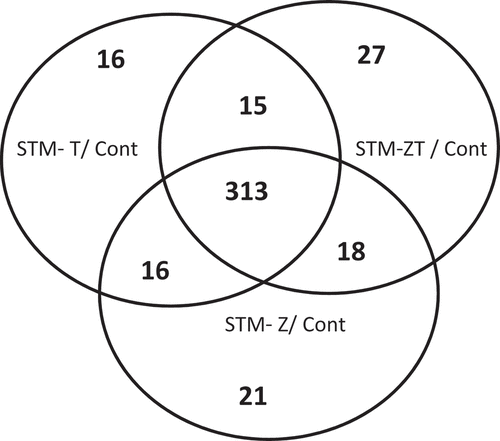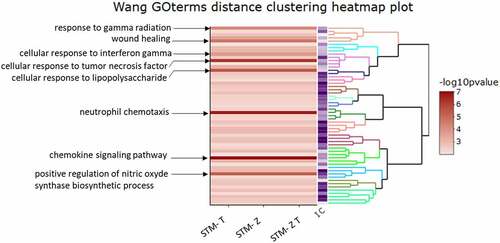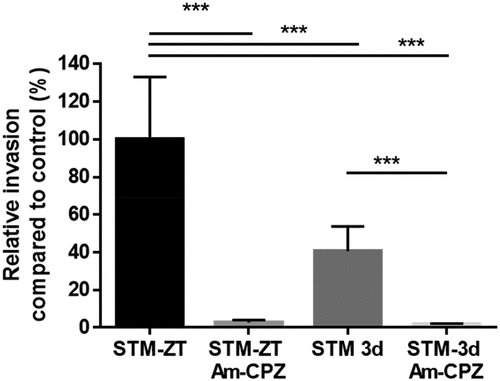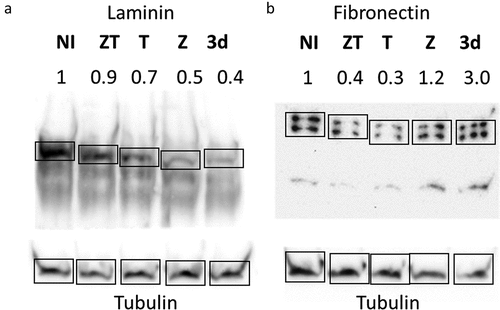Figures & data
Table 1. Characteristics and designation of the strains used in this study.
Figure 1. Invasion of IEC-6 cells by S. Typhimurium strains entering cells by different entry pathways.

Table 2. Paired comparisons of gene expression modification induced in IEC-6 cells exposed to the S. Typhimurium strains STM- Z T, STM- Z, or STM- T.
Figure 2. Specific and shared differentially expressed genes between IEC-6 cells exposed to STM-ZT, STM-Z or STM-T strains compared to non-exposed cells (cont).

Figure 3. Functional enrichment analysis of biological processes.

Table 3. Differentially expressed genes in the microarray experiment associated with stimulation or inhibition of the ECM.
Table 4. Differentially expressed genes included in the IPA upstream regulator analysis that may be activated by the AHR pathway.
Table 5. Comparison of gene expression determined by microarray and qRT PC.
Figure 4. Invasion of the STM-ZT and STM-3d strains impaired for entry by pharmaceutical means.

Table 6. Expression profile of selected ECM-associated genes in IEC-6 cells treated or not with chlorpromazine and amiloride before and during infection with the STM-Z T strain.
Figure 5. Western blotting analysis of IEC6 cells infected by the different S. Typhimurium strains.

Supplemental Material
Download Zip (1.8 MB)Data availability statement
The data that support the findings of this study are available in the GEO database with the accession number GSE151881.
